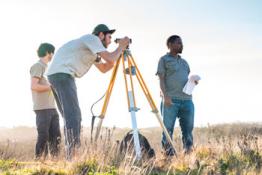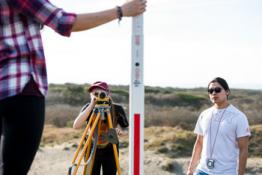Matt Mitchell
Matt's research compared terrestrial invertebrate communities in Spartina densiflora-invaded and restored salt marshes along Humboldt Bay. Results showed significant differences in invertebrate community structure in S. densiflora invaded marsh when compared to samples taken in restored marsh. Richness and evenness of epibenthic and low canopy invertebrates was highest in the restored marsh. Both the invasive snail Myosotella myosotis and the native snail Littorina subrotundata displayed a strong association with invaded sites, while the native talitrid amphipod genus Orchestia was associated with restored sites. In restored Distichlis spicata dominated salt marsh, individuals in the order Hemiptera represented nearly 100% of all invertebrates sampled, the most abundant of which was in the family Delphacidae. The long-jawed orb weaver spider family Tetragnatha was found in relatively high abundance at invaded sites, but was nearly absent from Salicornia pacifica and D. spicata vegetation at restored sites. The taller height of S. densiflora (compared to native salt marsh vegetation) provides habitat niches and refugium at high tide not found in native salt marsh, and disrupts existing co-evolved relationships between invertebrates and native vegetation.








